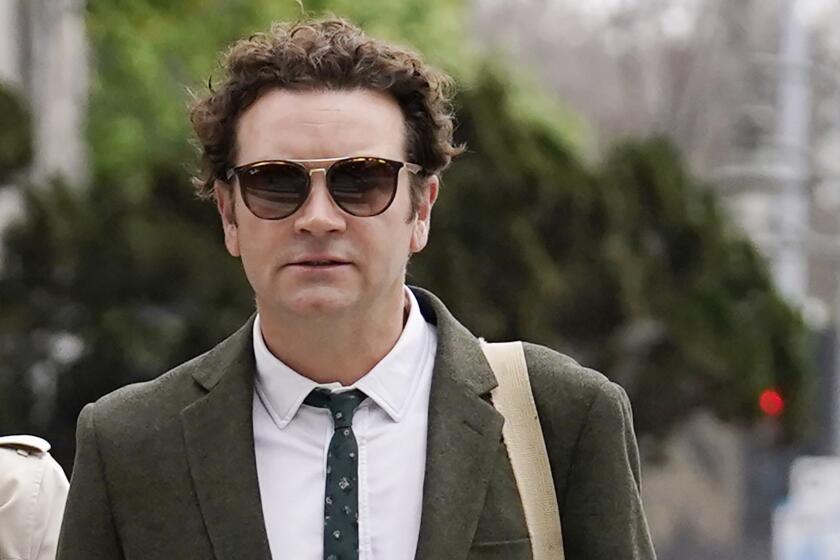PCB-Filled Equipment to Be Lifted Off Hotel
Early this morning, a helicopter is expected to swoop down over the luxurious 21-story Westgate Hotel in downtown San Diego and lift three 3,000-pound electrical transformers from the roof. With that flight, the hotel will rid itself of the last traces of highly toxic PCB contamination.
The hotel is still facing a $50-million lawsuit filed in February by a former employee who, over the course of about three years, was required to clean up PCB-contaminated oil that leaked from two of the transformers. He used mops and rags and kitty litter. He says he never was provided with protective clothing because, he was told, there was nothing wrong with the oil.
Today, George Guerin, 31, a National City resident, sits at home, unable to work. He has lost all of his upper teeth, half of his lower ones, and much of his coordination. He says he canât eat a full meal without vomiting; most of the time his nourishment consists of milk and bread.
The cause of his maladies, Guerinâs doctors say, is PCBs--polychlorinated biphenyls--in his blood. And the source of PCBs, his lawsuit alleges, was the Westgate Hotelâs leaking transformers, the ones being taken out today.
âThe work we did was just a routine thing. I must have been up there 50 times cleaning up,â said Guerin, who worked at the hotel for eight years before leaving in December, after he had lost some teeth and had been diagnosed as having an enlarged liver.
âI used to wear my uniform home and it would be stained with oil,â he said. After he began getting sick, Guerin said, his wife told him about newspaper stories she had read linking PCB-contaminated oil to his symptoms. Guerin went to a toxics specialist at UC San Diego, who found PCBs in Guerinâs blood at levels 300 to 400 times higher than what occurs in the âbackgroundâ level of San Diego.
Richard Tentler, Guerinâs Santa Barbara-based attorney, said the level of PCBs in the San Diego environment is one to three parts per billion. Guerinâs medical tests showed his PCB level at 410 parts per billion.
In addition, the chemical âfootprintâ in Guerinâs blood matches the type of PCBs found in the hotelâs transformers, Tentler said.
The attorney also represents a second hotel worker who claims to have chronic gum disease, high blood pressure and headaches stemming from PCBs in the transformers.
Guerinâs lawsuit claims that officials at the hotel knew about the PCBs leaking from the transformers since at least 1982 but that they concealed that fact from Guerin, who continued routinely cleaning the oil spills, some of which were 34 feet wide, according to court documents.
In response, attorneys for the hotel say that Guerinâs injuries are due to his own negligence, court documents say.
The lawsuit is still in the early stages of litigation, and no trial date has been set.
A review of files kept by the California Occupational Safety and Health Administration (Cal-OSHA), which in the summer and fall of 1984 investigated the leaks, shows that Guerinâs supervisor didnât consider PCBs to be a health hazard.
Dan Murray, chief engineer at the hotel, told Cal-OHSA investigator Gerry Neisler that the PCB spill was âa big deal about nothing,â Neisler noted in his report. According to the report, Murray âdid not think that PCB was a hazard and that the material was over-regulated.â
The first Cal-OHSA inspection in July, 1984, found PCBs in high concentrations. The agency ordered the hotel to decontaminate the transformer area by using a licensed, toxic-waste cleanup company. It also advised the hotel not to have anyone touch the PCB-laced oil because proper protection equipment and handling methods probably would be required to remove it.
However, on a second inspection in August, Cal-OHSA investigators found that Murray had instead attempted the cleanup himself using rags and a solvent. Photos taken by Cal-OHSA showed footprints on the floor of the transformer room.
Cal-OHSA took wipe samples from Murrayâs shoes, which he had worn throughout the hotel, and they tested positive for PCB contamination.
Studies have shown PCBs to be highly toxic and a suspected cancer agent. The Toxic Substances Control Act, approved by Congress in 1976, outlawed the manufacture and use of PCBs in all but very limited cases. The chemical is considered so toxic that the U.S. Environmental Protection Agency says contamination can occur through inhalation or contact with the skin, including through clothing.
Standards set by the National Institute for Occupational Safety and Health, a branch of the the U.S. Department Health and Human Services, say that extreme care must be used when dealing with PCBs.
âIn any operation where workers may come into direct contact with PCBs, protective clothing impervious to PCBs shall be worn,â the standards say. âGloves, boots, overshoes, and bib-type aprons that cover boot tops shall be provided when necessary. Protective apparel shall be made of materials which most effectively prevent skin contact with PCBs where it is most likely to occur. Employers shall ensure that all personal protective clothing is inspected regularly for defects and that it is in a clean and satisfactory condition.â
Guerin says that, except for a rubber glove he wore, he was never supplied with any protective clothing. âThe only thing I had was the uniform the hotel gave me,â he said.
Ann Holding, manager of the Westgate and daughter of the owner, said in a telephone interview that the removal of the transformers has nothing to do with the lawsuit or any removal order from any government agency.
âThis has nothing to do with the lawsuit, per se, at all,â Holding said. âEPA has stated these type of transformers should be replaced over the next few years. There are hundreds of thousands of such transformers around the country.â
David McFadden, of the EPAâs PCB regional division in San Francisco, confirmed that the Westgate is not under any orders to remove the transformers. He also noted that several thousand transformers containing PCBs are still in legal use.
Don Neilsen, of the San Diego Cal-OHSA office, said that once repairs were made to stop the leak and the transformer area was tagged as off-limits, that was enough to satisfy the state agency.
âWe looked at what could happen, for example, if there were a fire,â Holding said. âWe decided to do it (remove the transformers) right now.â
She said that no other employees, including Murray, have become ill since their exposure to the transformer oil. The attorney for the hotel, Dan Bushnell of Salt Lake City, was unavailable for comment.
Another government agency that helped in the Westgate investigation was the San Diego County Department of Health Services. Larry Aker, project manager for the hazardous materials management program, said the leak at the Westgate âis not really unique,â and that similar spills have occurred elsewhere in the county.
âOnce we assured ourselves that no more exposure would occur . . . that was the end from our point of view,â Aker said.
Speaking generally about PCBs, Aker said that, until 1977, âpeople practically bathed in it.â But since then, he said, information about the danger of PCBs has become so widespread that companies who do not to take precautions against contamination are negligent.
âBy now, everyone should know about it and have plans in place to protect workers,â Aker said. âCertainly by 1981, every company should have been in compliance (with PCB regulations). Everyone should have known . . . if they didnât, then itâs negligence.â
More to Read
Sign up for Essential California
The most important California stories and recommendations in your inbox every morning.
You may occasionally receive promotional content from the Los Angeles Times.










